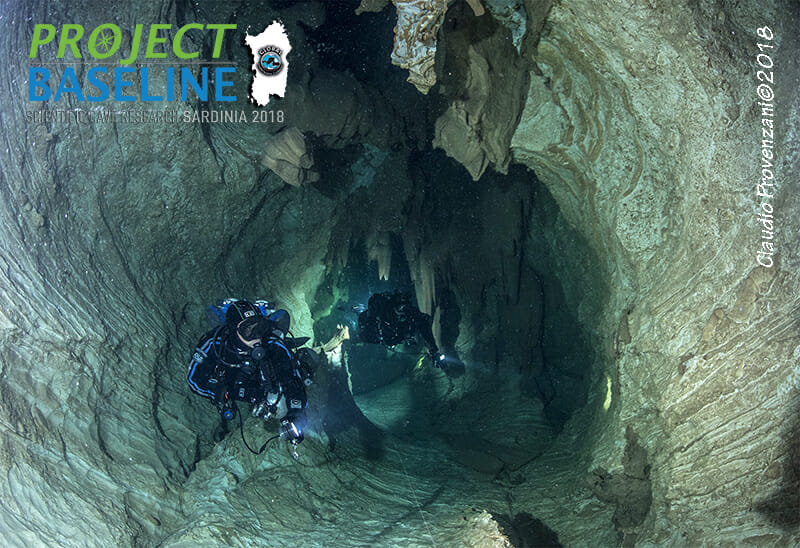Project Baseline Sardinia has developed exponentially in the last 4-5 years, going from a friendly meet up in the beautiful location of Cala Gonone, to a lot more organized and structured campaign dedicated to conservation and scientific research.
.jpg)
During 2018 summer session, we had forty volunteers working together for two weeks time; all GUE divers were having different levels of experience and qualification, from Cave 1 to Rebreather (RB80 and JJ) but one common goal: assist researchers in their scientific studies.
One of the objectives of the project is the study of benthic foraminifera (microscopic shells) that have been found in the Anchialine coastal caves of the Orosei Gulf during the first campaign in 2013. By analyzing these shells on site and in the laboratory, researchers not only can understand and try to anticipate climate/environmental changes in the area but especially they aim to demonstrate the foraminifera can be used as an environmental indicator in the different aquatic habitats from marine to transitional waters.
This year we expanded the study to another cave named Utopia, further south and deeper than Bel Torrente and Bue Marino caves where generally the samples of sediment and water are collected. Also, divers collected a number of sediment cores in different areas of the caves, to be sent to a laboratory for analysis together with the sediment samples, to specifically study the chronological evolution of the sedimentary records and of the foraminifera associations.
Another objective of the project is to protect by documenting the fossilized bones of monk seal (today an endangered species) that have been found in Bel Torrente cave.

Despite they have been partially found in 2004 by Prof. Sgualdini and dated 5/6000 years old by Dr. Dewaele et al, there was no complete published survey or documentation. After initially mapping and geo-referencing all the bones in 2014, we realized they are more than 200 pieces spread in a passage between 750 and 1500 meters inside the cave (2000-4000ft). Of course, seals could not have reached such a distance in an underwater cave and their presence there is connected with different sea levels during ice ages. How they managed to get there and if there was another entrance still has to be discovered but we are nowadays documenting all major bones and jaws with photogrammetry and 3D models.

There is also collateral tasks during the campaign weeks, like organizing expositions of pictures and produce video documentaries to show local community and tourists the treasure they can find in these waters and increase community awareness of this extremely delicate habitat; also, we try to assist local decision-makers in supporting the development of the long-awaited marine protected area. More and more organizations are getting interested in these studies, both research institutes, and local entities like the aquarium of Cala Gonone.
Submitted by: Andrea Marassich
